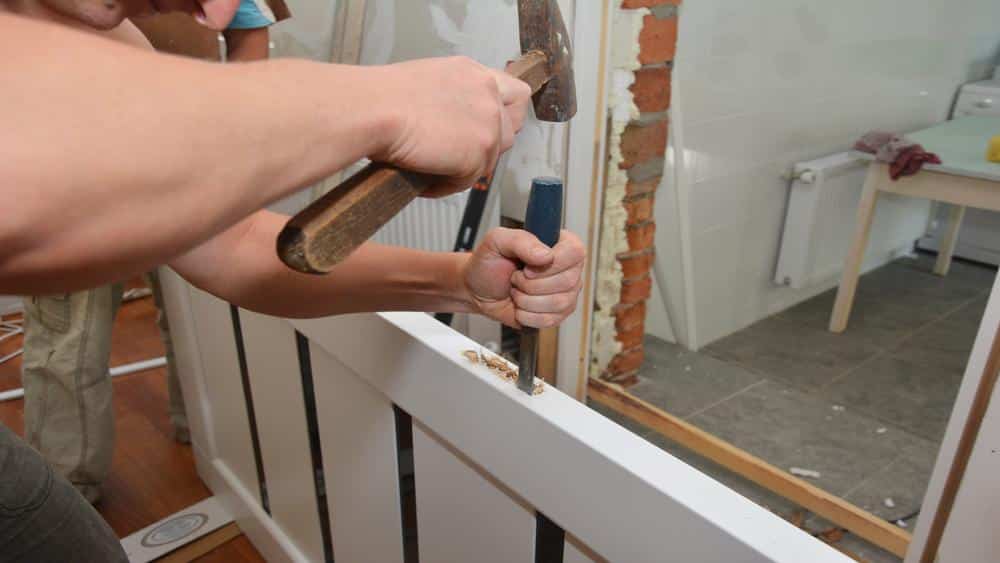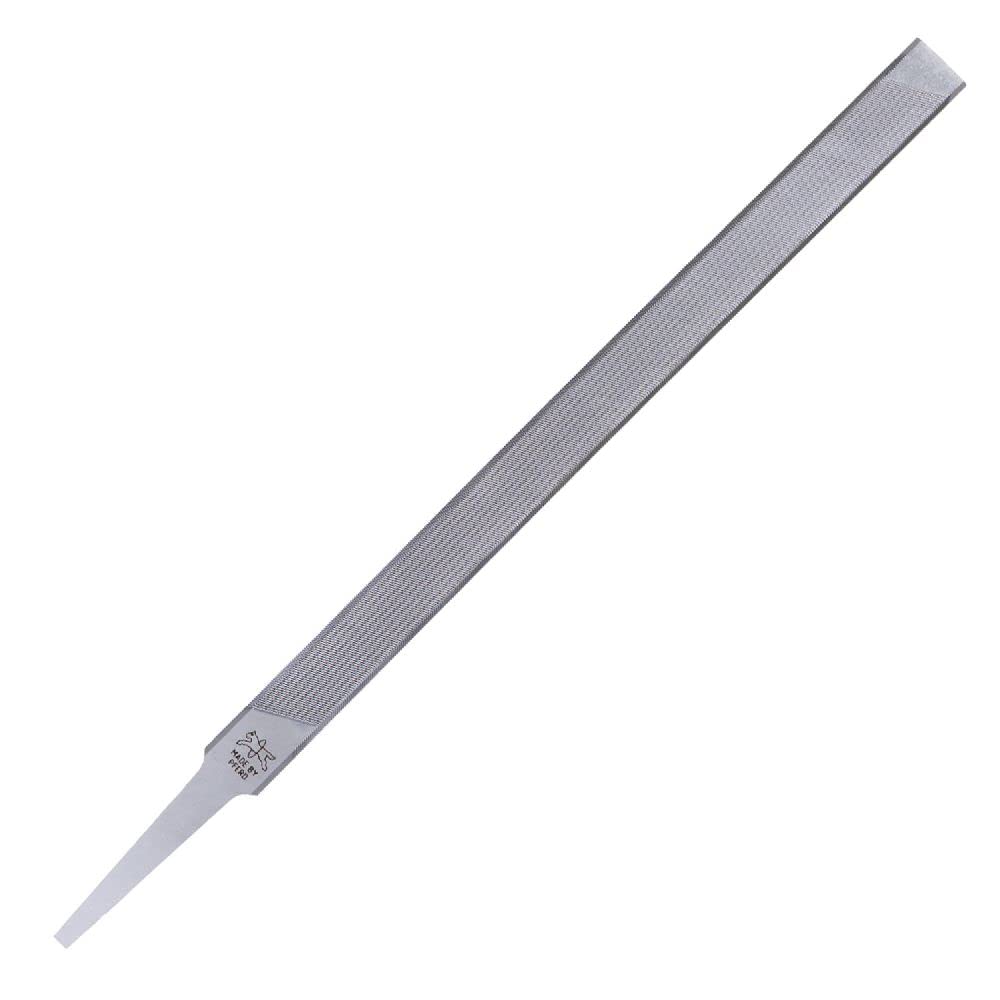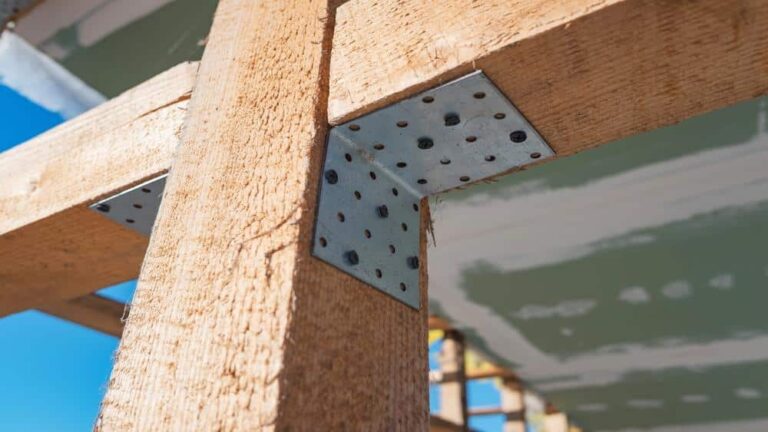Woodworking enthusiasts often come across situations where drilling a square hole becomes necessary. Whether it’s for joinery, creating unique designs, or fitting specific components, knowing how to drill a square hole in wood can be valuable. This article will explore various methods and techniques to accomplish this task. From traditional methods to modern tools, we will cover everything you need to know about drilling square holes in wood.

Understanding the Need for Square Holes
Before diving into the ‘how’, let’s briefly discuss the ‘why’. Square holes are essential for:
- Mortise and Tenon Joints: Used in furniture-making for robust connections.
- Recessed Square Fixings: Preventing the bolt head or nut from turning.
- Customized Elements: Creating unique designs in various projects.

The Tools: Introducing the Square Hole Drill Bit
There’s a special drill bit designed for square holes, commonly referred to as a “mortising chisel” or “hollow chisel mortiser”. It’s a combination of a regular drill bit enclosed by a square, hollow chisel.
From Round to Square: Transform Your Drilling Skills Today!
Components of the Mortising Chisel:
- The Drill Bit: Removes the bulk of the material.
- The Square Chisel: Cuts the square shape and cleans out the remaining material.
Drill Bit & Square Chisel
Step-by-Step Guide to Drilling a Square Hole
Choose the Right Chisel Size
Begin by selecting the appropriate size of the mortising chisel for your project. It’s essential to have a snug fit for optimum results.
Secure Your Workpiece
Use a vise or clamps to ensure that your workpiece remains stationary throughout the process.
Mark the Drilling Spot
With a pencil or marker, clearly indicate where you’d like the square hole.
Align the Mortising Machine
Position the chisel so that it aligns perfectly with your marked spot. Double-check the alignment to prevent any inaccuracies.
Begin the Drilling Process
Turn on the machine and start drilling. The central bit will start removing the bulk material, and the square chisel will follow, cleaning out the rest and shaping the hole.
Clean and Finish
After drilling, remove any excess material from the hole. You can use sandpaper or a file for a smooth finish.
Ensuring Safety and Precision
- Always wear safety goggles and gloves.
- Ensure your work area is well-lit.
- Keep your tools sharp for precise cuts and less effort.
- Never force the chisel; let the tool do the work.
Drilling a square hole, while specialized, doesn’t have to be a daunting task. With the right tools, clear instructions, and safety precautions, you can achieve perfect square holes tailored to your project’s needs. Whether you’re a seasoned professional or a DIY enthusiast, mastering this technique will undoubtedly elevate your craft.
Chisel and Hammer Technique
This is my favourite; the chisel and hammer technique is a traditional approach that involves removing and striking material with a mallet. This method requires skill and precision but can effectively create square holes.
To drill a square hole using a chisel and mallet, follow these steps:
- Mark the outline of the square hole on the wood surface.
- Use a chisel to make vertical cuts along the marked lines.
- Gradually deepen the cuts by striking the chisel with a hammer.
- Remove the material in between the cuts, working towards the center.
- Regularly check the dimensions and make adjustments as needed.
Required Tools: Chisel, Hammer, measuring tools.
- Pros: Can achieve accurate square holes, suitable for smaller projects.
- Cons: Time-consuming, requires precision and experience with chisel work.
Physically Filing
When drilling square holes in wood, one of the oldest and most labor-intensive methods is physically filing the hole. This method involves removing material from the round hole using files until it reaches a square shape. It requires patience and precision but can be accomplished with essential hand tools.
To physically file a square hole, follow these steps:
- Begin by drilling a round hole slightly larger than the desired square hole size.
- Use square files to start shaping the hole, working from the corners toward the center.
- Continuously check the dimensions and adjust the filing as needed.
- Regularly test-fit the desired component in the hole to ensure accuracy.
Tools Required: Drill, round file, square files, measuring tools.
- Pros: Inexpensive method, suitable for small-scale projects.
- Cons: Labor-intensive, time-consuming, requires good hand-eye coordination.
Using a Jigsaw Blade
Another method for drilling square holes involves using a jigsaw blade. While jigsaws are primarily designed for curved cuts, they can be utilized as a guide to creating straight edges and square holes in wood.
Follow these steps to drill a square hole using a jigsaw blade:
- Mark the center of the square hole on the wood surface.
- Attach a jigsaw blade suitable for straight cuts.
- Align the jigsaw blade with the marked line and turn on the jigsaw.
- Slowly guide the jigsaw along the marked lines to cut the square hole.
- Make multiple passes if necessary, ensuring the blade remains aligned with the marked lines.
Required Tools: Jigsaw, jigsaw blades, measuring tools.
- Advantages: Relatively quick method, produces accurate square holes.
- Limitations: Requires a jigsaw and suitable blades, may require additional finishing work.

Using a Mortise Chisel with a Drill Press
A precise and efficient method for drilling square holes is using a mortise chisel with a drill press. This technique allows for controlled and accurate material removal, resulting in clean square holes.
To drill a square hole with a mortise chisel and drill press, follow these steps:
- Mark the outline of the square hole on the wood surface.
- Set up the drill press with a suitable drill bit for creating the corners of the square hole.
- Drill holes at each corner of the marked outline.
- Using a mortise chisel removes the material between the drilled holes, following the marked lines.
- Regularly check the depth and adjust the chisel or drill press if necessary.
Equipment Needed: Drill press, mortise chisel, drill bits, measuring tools.
Overview: Precise and efficient method requires a drill press and mortise chisel.
Detailed Steps and Tips:
- Ensure the drill press is properly set up and secured before drilling.
- Use sharp drill bits to clean corner holes.
- Maintain consistent pressure while using the mortise chisel to avoid splintering.

Drill and Saw Method
The drill and saw method is a combination approach that utilizes both a drill and a saw to create square holes. It is a straightforward method that can be used when specialized tools are unavailable.
To drill a square hole using the drill and saw method, follow these steps:
- Mark the outline of the square hole on the wood surface.
- Use a drill to create holes at each corner of the marked outline.
- Insert a saw blade (preferably a scroll or coping saw blade) into one of the corner holes.
- Cut along the marked lines, following the outline of the square hole.
- Regularly check the dimensions and make adjustments as needed.
Step-by-Step Guide:
- Ensure the drill bit and saw blade are suitable for the thickness of the wood.
- Take your time to maintain accuracy while cutting with the saw.

Router Technique for Square Holes
Utilizing a router is an efficient and precise method for drilling square holes in wood. You can quickly achieve consistent square holes using a router with a square guide or template.
To drill a square hole using a router, follow these steps:
- Prepare a square guide or template matching the hole’s desired size.
- Secure the wood piece and position the square guide/template on the marked location.
- Attach a straight-cutting bit to the router.
- Set the desired depth on the router.
- Rout along the edges of the square guide/template, removing material to create the square hole.
- Regularly check the dimensions and make adjustments as needed.
Explanation: Utilizes a router with a square guide/template for precise square holes.
Necessary Tools and Setup: Router, square guide/template, straight-cutting bit, measuring tools.
Best Practices and Variations:
- Ensure the router is secured correctly and the bit is sharp.
- Use a guide/template that matches the desired square hole size.
Square Hole Drill Bits for Wood
Another specialized option for drilling square holes in wood is using square hole drill bits. These bits feature a square-shaped cutting edge that removes material in a drilling motion, resulting in accurate square holes.
When using square hole drill bits, consider the following:
- Select a square hole drill bit appropriate for the desired hole.
- Secure the wood piece and align the drill bit with the marked location.
- Apply steady pressure and drill at a slow speed to prevent chip-out.
- Regularly clear out wood debris to maintain smooth cutting.
Overview: Square hole drill bits are specialized tools for drilling precise square holes.
Types and Sizes Available: Square hole drill bits are available in various sizes to accommodate different square hole dimensions.
Tips for Using Square Hole Drill Bits Effectively:
- Ensure the drill bit is sharp for cleaner cuts.
- Use a drill press or secure the wood piece firmly when drilling with square hole bits.
Frequently Asked Questions (FAQs)
I. Can I drill a square hole without specialized tools?
While specialized tools like chisels, saws, routers, and drill bits make the process easier, drilling a square hole using alternative methods like filing or a jigsaw blade is possible. These methods may require more time and effort but can be accomplished with basic hand tools.
II. Which method is the fastest for drilling square holes in wood?
The fastest method for drilling square holes in wood typically involves using a square hole punch or drill bit. These specialized tools are designed for efficient and precise square-hole drilling, making the process quicker than traditional methods.
III. Are there any limitations to drilling square holes?
While drilling square holes in wood offers unique possibilities, some limitations should be considered. Square holes can weaken the structural integrity of the wood, especially in thinner or softer materials. It is essential to assess the project’s requirements and the wood’s properties to ensure the square holes maintain overall strength and durability.
IV. What safety precautions should I follow when drilling square holes?
When drilling square holes in wood, it is crucial to prioritize safety. Wear appropriate safety gear such as goggles, gloves, and a dust mask to protect yourself from flying debris and dust. Secure the workpiece properly to prevent movement during drilling, and ensure your tools are sharp and in good condition to avoid accidents or excessive force.
V. Can square holes be drilled in materials other than wood?
While the focus of this article is drilling square holes in wood, it is worth noting that square holes can also be drilled in other materials. However, the techniques and tools may vary depending on the material’s properties. Always consider the specific requirements and characteristics of the material before attempting to drill square holes.
Conclusion
Drilling square holes in wood requires the proper techniques and tools. Each method offers advantages and considerations, From traditional methods like physical filing and using a chisel and mallet to modern approaches like using a jigsaw blade, mortise chisel with a drill press, or square hole drill bits. By following the appropriate steps and using the recommended tools, you can achieve precise square holes in wood, expanding your woodworking possibilities.









